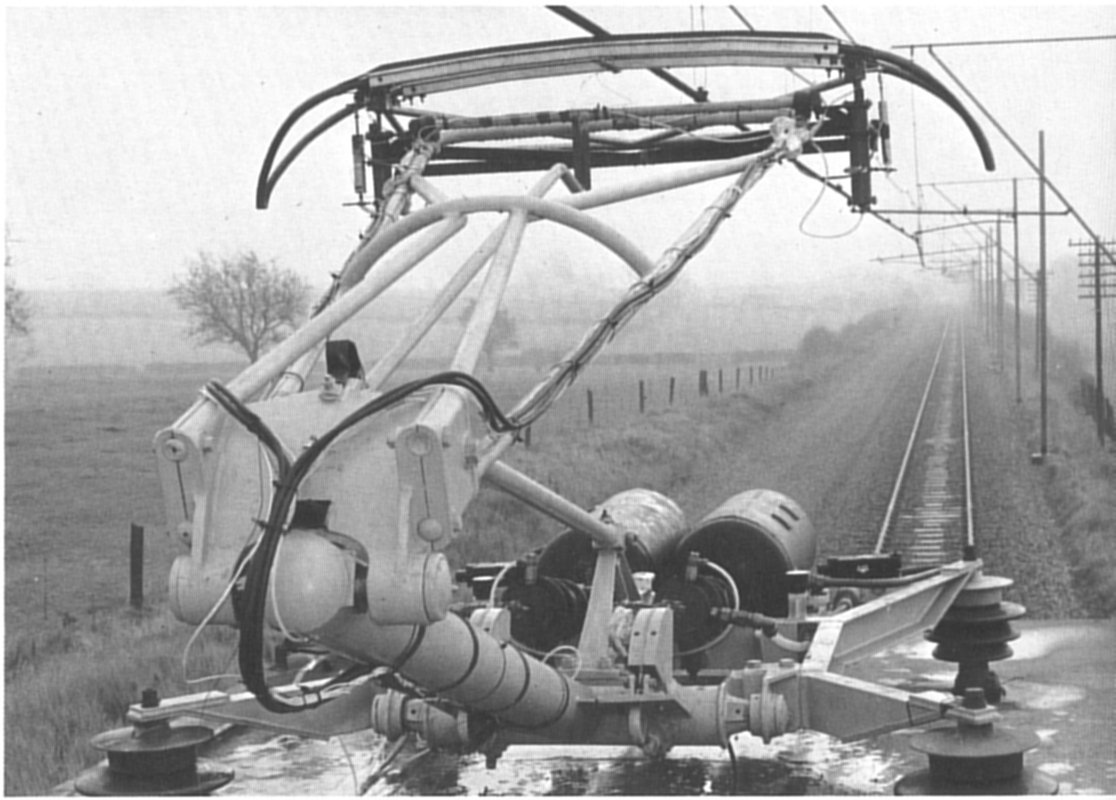What you call a diamond panto was in fact a cross-arm panto, like so:
This is a modern design of a cross arm panto. They were heavy, usually had lightning conductors beside them,
and several springs. These springs would raise the panto, and place pressure on the wires. (Up to 36 lbs psi) Much more pressure
than later, modern pantographs. If you put two pantos together (as in EMU's) then you would likely get some snagging.
Later pantographs - Japan and the UK, had a different base, longer and a simpler design:
Here is an example of this kind of pantograph on an BR Class 27:
This single pan design was common throughout 60-70's and may still be found in action in some places worldwide.
Cross arm pantos are still in use, in more modern design - particularly in Japan, and in NSW, Australia:
(Photo copyright Marcus Wong)
Single arm pantos emerged circa 1950 - the Stone Faiveley design was tested extensively - particularly in France on high speed trains - and began to be adopted.
This photo is of a panto under test at Old Dalby.
Different variations of this design exist. Problem with these pantographs is a balance between pressure (upward force) and contact on the delivery wire.
Some designs will leave the contact wire at high speed causing sparking, arcing, etc.
The other thing is when they snag, they very quickly become origami. There are youtube videos of single arm pantographs snagging.
Nonetheless, they are the modern bop, and obviously deemed better than cross-arm pantos and similar kinds.
Wikipedia has a brief page on pantographs here:
https://en.wikipedia.org/wiki/Pantograph_(transport)




